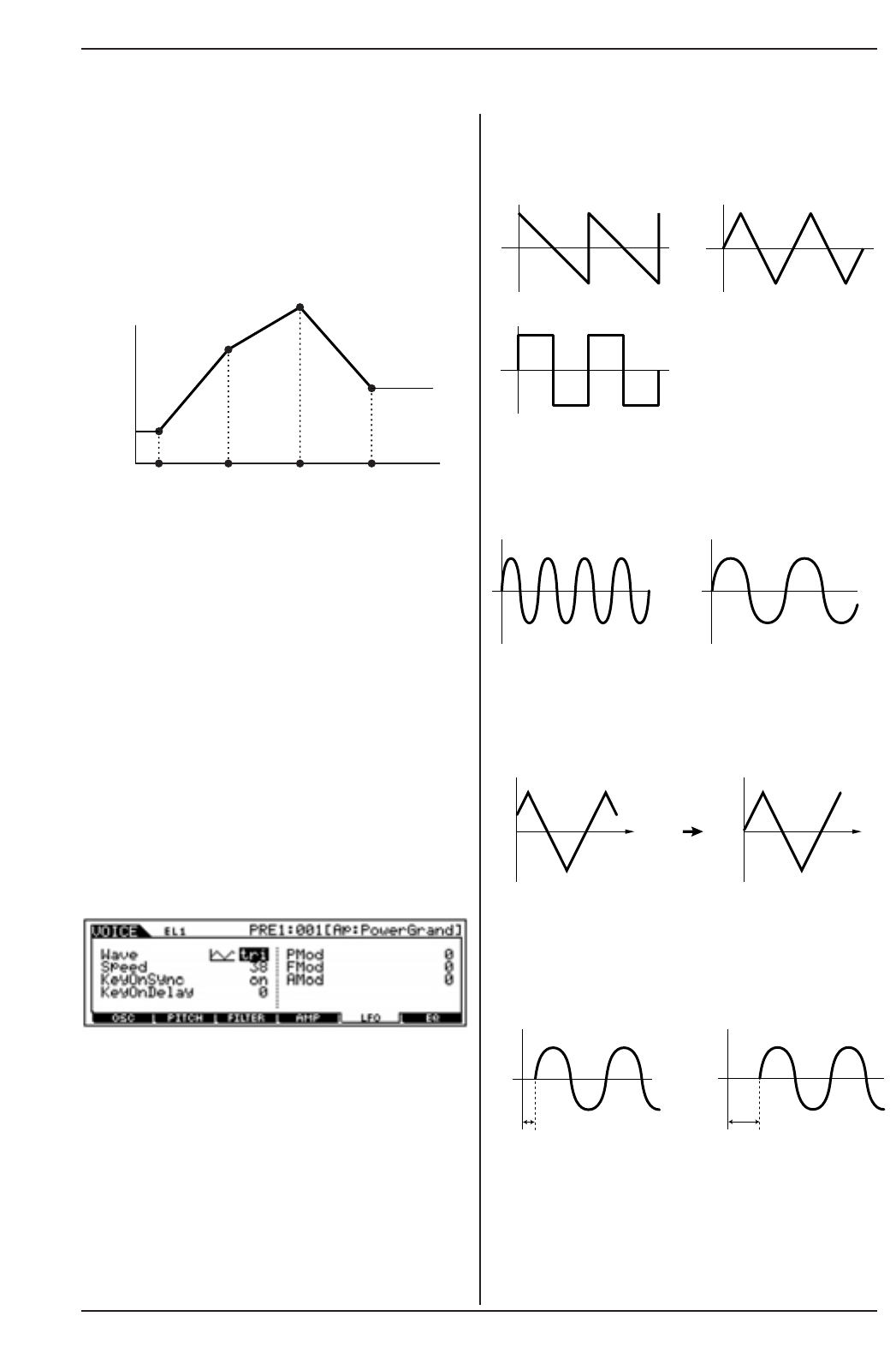La mejor manera de entender el escalamiento de la amplitud
es mediante un ejemplo. Para los ajustes mostrados en la
pantalla de ejemplo anterior, el valor básico de amplitud (volu-
men) para el elemento seleccionado es 80, y los diversos
ajustes de valores de desviación en el punto de ruptura selec-
cionado cambian el valor básico consecuentemente. Los
cambios específicos en la amplitud se muestran en el diagra-
ma a continuación. La amplitud cambia de manera lineal entre
los sucesivos puntos de ruptura como se muestra.
n BP1 (Punto de ruptura 1) a BP4 (Punto de ruptura 4) se ordena-
rán automáticamente en orden ascendente a través del teclado.
n Independientemente del tamaño de estas desviaciones, no se
pueden exceder los límites de corte máximos y mínimos (valo-
res de 0 y 127 respectivamente).
n Cualquier nota tocada por debajo de BP1 da como resultado el
ajuste al nivel de BP1. Igualmente, cualquier nota tocada por
encima de BP4 da como resultado el ajuste al nivel de BP4.
● [F5] Elemento normal LFO
Estructura básica (página 47)
Esta pantalla le proporciona un grupo de controles sobre el
LFO para cada elemento individual. El LFO se puede usar
para crear vibrato, wah-wah, trémolo y otros efectos espe-
ciales, aplicándolo a los parámetros de tono, filtro y ampli-
tud.
● Wave
Determina la forma de onda del LFO usada para variar el sonido.
❏
Ajustes: saw (sierra), tri (triangular), squ (cuadrada)
● Speed
Determina la velocidad de la forma de onda del LFO. Cuanto
mayor el valor, más rápida la velocidad.
❏
Ajustes: 0 ~ 63
● KeyOnSync (sincronización con tecla activada)
Cuando está activado, la forma de onda del LFO se restablece
cada vez que se toca una nota.
❏
Ajustes: off (desactivado), on (activado)
● KeyOnDelay
Determina el tiempo de retardo antes de que el LFO entre en
acción. Cuanto más alto el valor, más largo el tiempo de retardo.
❏
Ajustes: 0 ~127
● PMOD (profundidad de modulación del tono)
Determina la cantidad (profundidad) en la que la forma del LFO
varía (modula) el tono del sonido. Cuanto mayor el valor, más
❏
Ajustes: 0 ~127
MOTIF (Referencia)
147
Modo de edición de voces

